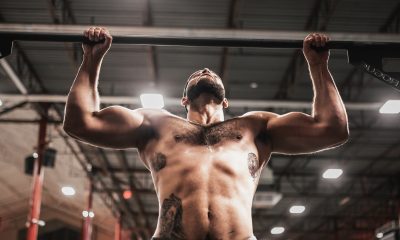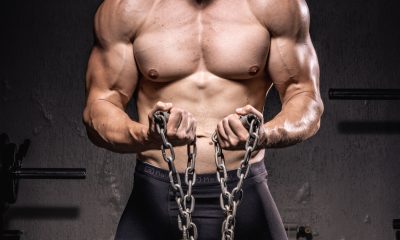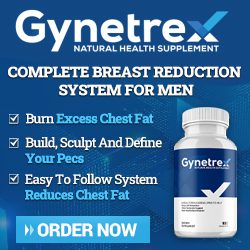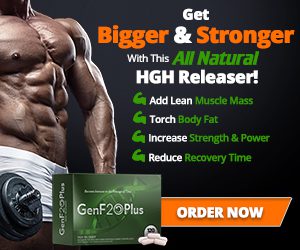Workout
How to Do Bodybuilding Above 50 years Age
Numerous people more than 50, surrender the thought of beginning on a muscle-building program. However, Bodybuilding Above 50 years at this age, quality, and wellbeing are significantly more imperative. As you get older, you might begin to trust that you are 'past your prime' similarly as muscle building is concerned. The normal anabolic hormones in the body are beginning to back off. This is simply going to make it increasingly hard to pick up the incline mass you're searching for.
Bodybuilding Above 50 years Age
Now and again, people who are more than 50 might desert. The point of view of beginning on a muscle-building program completely. Choosing rather center their endeavors on something else in life where they think they will stand a superior chance for achievement.
This is awful on the grounds that, in spite of the way that your body is becoming older. There are still a lot of things that you can do to take your body to the following level. Adding incline muscle mass to your casing as of right now in your life could be much more advantageous than somebody who is in their mid-20s or 30s since feel aside. That muscle is going to offer you some assistance with maintaining a dynamic way of life into the last years.
People more than 50 do ordinarily see a sensational drop in incline muscle mass unless quality preparing workouts are being performed, so it's crucial that regardless of the possibility that you have never weight lifted, you now take an ideal opportunity to begin doing as such.
Must Read: Weight Training According To Your Body Type
Best Steps to follow
- Training time is frequently restricted on account of work and family commitments. Notwithstanding, this might be something to be thankful for. You are less inclined to overtrain via preparing time after time or with an excess of sets and reps.
- Injuries – any individual who has been preparing for the majority of their life has gathered different wounds that meddle with their workout. My own rundown incorporates lower back and elbow wounds for quite a long time, which are presently practically alright. Current issues incorporate ligament knees, shoulders (counting a complete shoulder substitution of my left shoulder) and wrist (which at present is my most restricting), alongside shifting degrees of tendinitis. Be that as it may, wounds, similar to restricted time to prepare can really be a gift. You might need to reduce the poundages that you use in specific activities. The reason this is great is that you can truly focus on creating impeccable structure and gradually advance for a drawn-out stretch of time before you hit a level.
- Self-Discipline – frequently enhances with age. We've needed to utilize it for the duration of our lives – in our workouts, as well as, maybe in school, the military, building our own business – indeed; any objective we've accomplished has had self–discipline as a basic segment.

- Patience – the older bodybuilder is no more searching for a brisk fix. He realizes that anything worth accomplishing requires some investment and exertion.
- Knowledge of how his body functions and feels – which practices he can do and which he should make conformity to, or keep away from.
- Realistic desires – he understands his qualities, additionally his constraints. Objectives are key for the more than 50 bodybuilders. Yet not at all like numerous younger bodybuilders has he realized that he is not going to be the following Arnold.
Think of Volume in Respect of The Age:

When you're young, your body can recoup rapidly, in this way it can deal with longer gym sessions. As well as you can perform these sessions all the more much of the time also.
A while ago when you were 30. You might have found that you could go into the gym for a hard workout one day. And be right back in there the beside target another group of body parts. Because of this, younger people are a better fit for taking care of workouts. The body is part of groups and requires numerous gym sessions every week, frequently performed sequentially.
When you begin getting older anyway, you're going to find that you can't recuperate as fast and in the event that you endeavor one workout the day after another was performed, execution might truly endure.
Workout and Bodybuilding Above 50 years
They had 21 subjects with a mean age of 80 years perform 11 weeks of the lower body works out. Eleven of these subjects performed negative work by practicing on a high-drive flighty ergometer. This sort of activity still requires the muscles to contract however requests next to no vitality from the subject. In this manner, this kind of activity is something that most delicate elderly who are at a high danger of falls can endure.
The specialists likewise had another group of 10 subjects endeavors to perform conventional weight preparing for the lower body muscle groups. They performed 10-15 reiterations that were viewed as "simple" and another 6-10 redundancy. That was considered by the subjects to be "troublesome."
After the eleven-week study was finished. The information exhibited that negative work was generally as successful for expanding the muscle fiber cross-sectional zone, enhancements in quality, parity, stair not too bad, and also a diminished danger of fall.
Moreover, since this negative work was respected by the subjects to be easy. It might end up being to be a decent practice answer for the individuals who are to a great degree narrow-minded to work out.
Must Read: Gaining Muscle Past The Age of 40
Last Words:
So don't rush to believe that you can't expand your muscular quality, force, and level of muscularity. With some savvy preparing changes and a decent demeanor. You can truly have any kind of effect by the way you look and feel.
Anabolic Steroids
Joint Stiffness: How to Manage It While on AAS

Joint stiffness is a common issue among bodybuilders who use androgenic anabolic steroids (AAS). Here's how it happens and what it involves:
AAS Mechanism of Action
Anabolic-androgenic steroids (AAS) work by enhancing muscle growth and strength. They enlarge muscle cells through hypertrophy, leading to increased muscle mass.
Activation of Androgen Receptors (AR)
-
- AAS, including those produced naturally (such as testosterone and dihydrotestosterone), bind to and activate the androgen receptor (AR).
- The AR is present in various tissues throughout the body.
Androgenic and Anabolic Effects
AAS effects can be categorized into:
Androgenic: These relate to the development and maintenance of male sexual characteristics.
Anabolic: These involve increasing bone density, muscle mass, and strength.
Impairment of Testosterone Biosynthesis
-
- In supraphysiological doses, AAS can impair testosterone biosynthesis in tissues.
- This disruption occurs due to their interaction with AR signaling.
How AAS Contribute to Joint Stiffness
Water Retention and Electrolyte Imbalance
-
- AAS can cause water retention, leading to increased fluid in the joint spaces. While this might initially seem beneficial, it can lead to stiffness if the excess fluid disrupts normal joint function.
- Electrolyte imbalances caused by AAS can affect muscle and joint function, contributing to stiffness.
Changes in Collagen Synthesis
-
- AAS can affect the synthesis and degradation of collagen, a primary component of connective tissue. This can lead to a decrease in the elasticity and resilience of tendons and ligaments, making joints feel stiffer.
Increased Muscle Mass
-
- Rapid gains in muscle mass can place additional stress on joints, which may not have time to adapt, resulting in stiffness and discomfort.
Altered Pain Perception
-
- Some AAS can alter pain perception and inflammatory responses, potentially masking injuries or causing changes in how the body responds to minor joint stresses, leading to stiffness.
Which Specific AAS Mainly Cause Joint Stiffness?
While not all anabolic-androgenic steroids (AAS) exhibit these adverse effects, certain ones are more prone to causing them. These include:
- Winstrol
- Masteron
- Proviron
- Halotestin
- Trenbolone
Additionally, high doses of testosterone, Dianabol, and Trestolone may also carry similar risks.
Dealing With Joint Stiffness Caused By AAS
Most AAS are dry compounds known for causing joint dryness. Some are usually wet compounds, which can lead to joint problems when taken in high doses without an aromatase inhibitor (AI), resulting in excess water retention that affects the joints.
Other AAS either have a neutral impact on the joints or enhance their strength and healing by boosting collagen production, with Nandrolone being a prime example.
To prevent joint issues when using wet AAS compounds, it is essential to use the appropriate AI dose (not too high) to manage estradiol levels and prevent excessive water retention.
Must Read: Anavar Cycle for Men and Women
For dry compounds, follow these guidelines to avoid joint issues:
Selective Testosterone Use
Ensure the use of a Testosterone base to achieve adequate estradiol conversion. While excess estradiol can cause water retention and joint damage, having the right amount is crucial for joint strength and lubrication.
Proper Gym Training
Exercise caution in the gym. Continuously pursuing personal records and lifting the heaviest weights can damage joints and cause injuries. Proper stretching and warming up with lighter weights are vital.
Supplements
Supplement with joint health supplements. Fish Oil at 6g daily or Krill Oil at 3g daily is essential for every AAS user. Additionally, taking MSM (Methylsulfonylmethane) at 1g daily and a few tablespoons of Collagen Powder daily will significantly benefit joint health.
Managing Other Forms of Joint Stiffness
Proper Warm-Up and Cool-Down
Engaging in thorough warm-up routines before workouts and adequate cool-down exercises afterward can help maintain joint flexibility.
Hydration and Nutrition
Staying well-hydrated and maintaining a balanced diet rich in essential nutrients like omega-3 fatty acids, glucosamine, and chondroitin can support joint health.
Supplementation
Using joint support supplements such as glucosamine, chondroitin, and MSM (methylsulfonylmethane) may help alleviate stiffness.
Monitoring and Adjusting Steroid Use
Careful monitoring of AAS dosages and cycles, under the guidance of a healthcare professional, can help minimize negative effects on joint health.
Rest and Recovery
Ensuring adequate rest and incorporating rest days into training routines can help prevent overuse injuries and joint stiffness.
Physical Therapy
Engaging in physical therapy or specific joint mobility exercises can improve joint function and reduce stiffness.
Long-Term Considerations
It's important to be aware that chronic use of AAS can lead to long-term joint issues. Regular check-ups with a healthcare provider, including monitoring of joint health, are crucial for those using AAS over extended periods. Recognizing the signs of joint problems early and taking proactive measures can help mitigate the risk of long-term damage.
Where to Buy AAS Online
Buying legitimate androgenic anabolic steroids (AAS) online can be challenging and carries significant legal, health, and ethical risks. However, if someone decides to proceed, here are some general tips on where to buy and how to check the quality:
Licensed Pharmacies (Where Legal)
In some countries, AAS can be purchased legally with a prescription from licensed pharmacies. Ensure to follow local regulations and obtain a valid prescription.
Reputable Online Retailers
Look for well-known, established online retailers with positive reviews and verified customer feedback. Forums, bodybuilding communities, and social media can provide recommendations.
Research Chemical Companies
Some companies sell research chemicals, including AAS, for "research purposes." Ensure these companies have good reputations and offer transparency about their products.
How to Check Good Quality
Third-Party Lab Testing
The best way to verify the quality of AAS is through third-party lab testing. Reputable sellers often provide lab reports or certificates of analysis that verify the purity and potency of their products.
Reviews and Testimonials
Check reviews on bodybuilding forums, websites, and social media platforms. Look for consistent positive feedback about product effectiveness, safety, and customer service.
Batch Numbers and Serialization
Legitimate products usually have batch numbers, expiration dates, and sometimes serialization. You can often verify these details through the manufacturer's website.
Packaging and Labels
Examine the packaging and labels for professionalism and accuracy. Poorly printed labels, misspellings, and low-quality packaging are red flags.
Customer Service
Good suppliers will have responsive and knowledgeable customer service. Ask questions about their products, sourcing, and testing procedures to gauge their reliability.
Price Comparison
If the price seems too good to be true, it probably is. Compare prices with other reputable sources to ensure you're not buying counterfeit or low-quality products.
Related Article: Varicose Veins in Bodybuilders: Risk Factors, Diagnosis and Management
Warning and Legal Considerations
- Legality: The legality of purchasing and using AAS varies by country. In many places, it is illegal to buy AAS without a prescription. Always check local laws before purchasing.
- Health Risks: Using AAS without medical supervision can lead to severe health issues. It's crucial to consult with a healthcare provider before starting any steroid regimen.
- Ethical Considerations: Consider the ethical implications of using AAS, especially in competitive sports where their use is often banned.
Conclusion
While there are ways to find and verify the quality of AAS online, it's essential to approach this with caution, awareness of the legal landscape, and a focus on health and safety. Overall, your joint health while on AAS should be a first priority so your training is not hindered.
Bodybuilding
Demystifying Hypertrophy Training
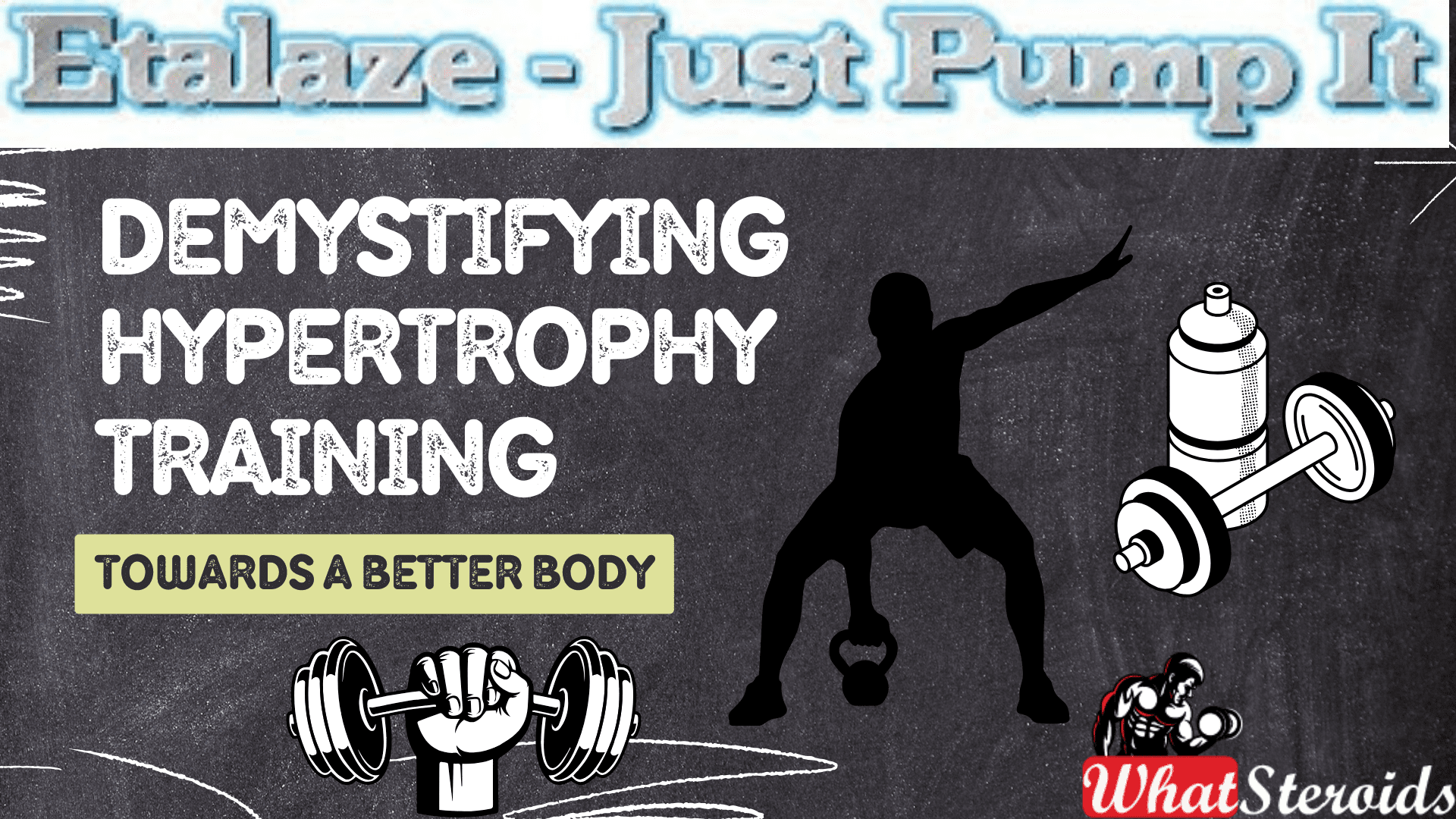
Hypertrophy training, often referred to as bodybuilding training, is a method focused on increasing muscle size and definition through targeted exercises and specific training techniques. Professional bodybuilders have mastered the art of hypertrophy training to sculpt their bodies into peak physical condition.
At its core, hypertrophy training involves lifting weights at a moderate to high intensity for a moderate number of repetitions. The goal is to create micro-tears in the muscle fibers, which then repair and grow stronger and larger during the recovery process. This leads to muscle hypertrophy or an increase in muscle size.
Understanding the basics of hypertrophy training involves knowing how to manipulate variables such as sets, reps, rest periods, tempo, and intensity. By adjusting these factors, individuals can tailor their workouts to target specific muscle groups and achieve optimal results.
Proper nutrition and adequate rest are also crucial components of hypertrophy training as muscles need sufficient fuel and time to recover and grow. Consistency in training and adherence to a well-rounded program are key pillars in unlocking the full potential of hypertrophy training.
Must Read: The Ultimate Chain and Plate Curls for Pumping Biceps
By demystifying hypertrophy training and embracing its principles with dedication and focus, individuals can effectively work towards achieving their desired physique goals while enhancing overall strength and endurance.
Principles of Hypertrophy Training
When you engage in strength training, you put strain on your muscles. This stress prompts the body to repair and adapt, resulting in an increase in muscle fibers. Here are the basics about this form of training you need to familiarise with:
Training Frequency
For new bodybuilders, a frequency of 3-4 times per week is often recommended to allow for sufficient recovery between sessions. Professional bodybuilders may train more frequently, sometimes up to 5-6 times per week, as their bodies have adapted to higher training volumes over time.
Intensity and Volume: New bodybuilders typically start with moderate intensity (around 65-75% of their one-rep max) and moderate volume (3-4 sets of 8-12 reps per exercise). Professional bodybuilders often incorporate higher intensities (75-85% of one-rep max) and higher volumes (4-6 sets of 8-15 reps per exercise) to continue stimulating muscle growth.
Exercise Selection
Both new and professional bodybuilders focus on compound exercises (e.g., squats, deadlifts, bench press) that target multiple muscle groups simultaneously to maximize muscle recruitment and overall hypertrophy. However, professionals may incorporate more isolation exercises to target specific muscles or muscle groups that need extra attention.
Progressive Overload
Both groups prioritize progressive overload, which involves gradually increasing the weight, reps, or sets over time to continue challenging the muscles and promoting growth. This can be achieved through methods such as increasing resistance, shortening rest periods, or varying exercise techniques.
Nutrition
Both new and professional bodybuilders emphasize the importance of nutrition for muscle growth and recovery. This includes consuming an adequate amount of protein to support muscle repair and synthesis, as well as sufficient carbohydrates and fats for energy and overall health.
Rest and Recovery
Adequate rest and recovery are crucial for hypertrophy training. Both new and professional bodybuilders prioritize getting enough sleep (7-9 hours per night) and incorporating rest days into their training schedules to allow muscles to repair and grow.
Supplementation
While both new and professional bodybuilders may use supplements to support their training and nutrition goals, professionals may have more sophisticated supplementation protocols tailored to their specific needs and goals. We recommend supplements such as protein powders, creatine, branched-chain amino acids (BCAAs), and pre-workout formulas.
Monitoring and Adjustments
Professional bodybuilders often closely monitor their progress through measurements such as body weight, body composition, and strength levels. Based on these assessments, they make adjustments to their training, nutrition, and supplementation protocols to continually progress towards their goals.
Arnold Schwarzenegger's Hypertrophy Workout Routine
Arnold Schwarzenegger's volume workout is a legendary approach to hypertrophy training that he popularized during his bodybuilding career. Here's an explanation of how his workout relates to hypertrophy training:
High Volume
Schwarzenegger's training program was characterized by high volume, involving a large number of sets and reps per workout. This high volume stimulates muscle growth by subjecting the muscles to prolonged tension and metabolic stress, both of which are key factors in hypertrophy.
Multiple Sets and Reps
Each exercise in Schwarzenegger's workout typically included multiple sets (often 4-5 sets) with a moderate to high number of reps (8-12 reps). This approach allows for ample time under tension, which is essential for stimulating muscle growth and hypertrophy.
Compound and Isolation Exercises
Schwarzenegger's workout included a combination of compound exercises (e.g., squats, bench press, deadlifts) and isolation exercises (e.g., bicep curls, tricep extensions) to target various muscle groups from different angles. Compound exercises help to maximize muscle recruitment, while isolation exercises allow for targeted muscle stimulation and hypertrophy.
Frequency
Schwarzenegger typically trained each muscle group 2-3 times per week, allowing for sufficient frequency to stimulate muscle growth while also providing adequate recovery time between sessions. This frequency helps to maximize hypertrophy by consistently exposing the muscles to growth-inducing stimuli.
Intensity Techniques
Schwarzenegger often incorporated intensity techniques such as drop sets, supersets, and forced reps into his workouts to further increase the intensity and stimulate muscle growth. These techniques help to push the muscles beyond their normal limits, triggering adaptations that lead to hypertrophy.
Periodization
Schwarzenegger employed periodization principles in his training, alternating between phases of higher volume and lower volume to prevent plateaus and continue making progress. This periodization strategy helps to optimize muscle growth by varying training stimuli over time.
Mind-Muscle Connection
Schwarzenegger emphasized the importance of the mind-muscle connection, focusing on contracting and feeling the target muscles working during each repetition. This approach helps to maximize muscle fiber recruitment and engagement, enhancing the effectiveness of each exercise for hypertrophy.
Nutrition and Recovery
In addition to his training program, Schwarzenegger paid close attention to his nutrition and recovery strategies to support muscle growth and hypertrophy. Adequate protein intake, proper hydration, and sufficient rest are essential components of any hypertrophy-focused training program.
Overall, Schwarzenegger's volume workout is a comprehensive approach to hypertrophy training that incorporates high volume, frequency, intensity techniques, and periodization to maximize muscle growth and achieve an impressive physique.
Also Read: Why Trenbolone Remains A Beast In The Market
10 Groups of Athletes That Can Benefit from Hypertrophy Workouts
We have prepared for you 10 groups of athletes that should consider hypertrophy training
1. Combat Sports Athletes
Martial artists, boxers, and other combat sports athletes can enhance their power and endurance through hypertrophy training.
2. Track and Field Athletes
Sprinters, jumpers, and throwers can improve their explosive strength by including hypertrophy training in their regimen.
3. Football/Soccer Players
Both American football players and soccer players can benefit from hypertrophy training to increase muscle mass and strength.
4. Gymnasts
Building lean muscle mass through hypertrophy training can help gymnasts improve their strength-to-weight ratio for better performance.
5. Swimmers
Swimmers can enhance their power in the water by incorporating hypertrophy exercises to strengthen key muscle groups.
6. Cyclists
While endurance is crucial for cyclists, adding hypertrophy training can boost leg strength and overall performance on the bike.
7. Basketball Players
Building muscle through hypertrophy training can improve basketball players' agility, jumping ability, and overall athleticism on the court.
8. CrossFit Athletes
CrossFit enthusiasts looking to excel in competitions can benefit from hypertrophy training to increase overall strength and muscular endurance.
9. Triathletes
Incorporating hypertrophy exercises into triathletes' routines helps prevent injuries by strengthening muscles that support joints during long-distance races.
10. Powerlifters
While powerlifting focuses on maximal strength lifts, including some hypertrophy work can aid in building a solid muscular foundation for lifting heavy weights more efficiently.
By tailoring a specific hypertrophy program to suit each group's athletic needs and goals, these athletes have the opportunity to optimize their performance levels while reducing the risk of injury associated with repetitive movements in sports-specific activities.
Final Thoughts
By understanding the underlying principles of progressive overload, volume, intensity, and frequency, individuals can tailor their training programs to effectively stimulate muscle growth. Whether you're a novice or a seasoned athlete, hypertrophy training offers a structured framework for optimizing muscle hypertrophy and sculpting a physique that reflects dedication, consistency, and strategic planning.
Embracing the science behind hypertrophy training empowers you as an individual to surpass limitations, break plateaus, and unlock their full potential in pursuit of their fitness aspirations. With proper guidance, commitment, and perseverance, anyone can harness the transformative power of hypertrophy training to sculpt a stronger, more resilient, and aesthetically pleasing physique.
Related Article: Post Cycle Therapy Vs. B&C: Which is Best for You?
Bodybuilding
The Importance of Scaptions in Female Athletes

Scaptions, also known as "scapular activations," play a crucial role in bodybuilding, especially for female athletes looking to enhance their performance and sculpt their physique.
Scaptions refer to exercises or movements that target the muscles around the scapula or shoulder blades. These exercises are essential for building a strong and stable foundation for various upper body movements, such as bench presses, rows, and overhead presses.
Incorporating scaption exercises into a workout routine can help improve shoulder stability, prevent injuries, and enhance overall strength and muscle development in the upper body. Some popular scaption exercises include front raises, lateral raises, and prone horizontal abduction.
When it comes to female athletes, focusing on proper scaption techniques can not only improve performance but also contribute to injury prevention. It is important to approach scaption exercises with proper form and control to target the intended muscles effectively.
For best results in incorporating scaption exercises into a bodybuilding regimen for female athletes, it is recommended to work with a qualified fitness trainer or coach who can tailor a program based on individual goals and fitness levels. Remember that consistency and progressive overload are key factors in maximizing the benefits of scaptions in bodybuilding routines.
Related Article: 10 Week Program & 5,000 Rep Arm Specialization Program
Target Muscles for Scaptions
When performing scaption exercises, several key muscles are targeted to help improve strength and stability in the shoulders and upper body. The primary muscles engaged during scaption exercises include the deltoids, specifically the middle deltoid, as well as the supraspinatus muscle.
The middle deltoid is responsible for lifting the arms sideways away from the body in a scapular plane, which is the primary movement pattern of scaption exercises. Strengthening this muscle can help improve shoulder stability and support proper posture.
Additionally, the supraspinatus muscle, which is part of the rotator cuff group of muscles, plays a crucial role in stabilizing the shoulder joint during scaption movements. Strengthening this muscle can help prevent injuries and improve overall shoulder function.
Incorporating scaption exercises into your workout routine can target these important muscles and contribute to improved shoulder strength and stability. By focusing on these specific muscle groups during scaption movements, you can enhance your overall upper body strength and reduce the risk of shoulder injuries.
Middle Deltoid
The middle deltoid is one of the three heads of the deltoid muscle, located in the shoulder. It is responsible for abduction of the arm, meaning it moves the arm away from the body laterally.
During scaption exercises, particularly when performed with dumbbells or cables, the middle deltoid is heavily engaged as it works to lift the arms from the sides to a position where they are slightly forward of the body, roughly at a 30-45 degree angle. Strengthening the middle deltoid contributes to shoulder width and overall shoulder aesthetics.
Trapezius
The trapezius muscle is a large, triangular muscle that extends from the base of the skull down to the middle of the back and across the shoulders. It is involved in several movements of the shoulder girdle, including elevation, retraction, and depression of the scapula (shoulder blade).
While performing scaption exercises, particularly when performed with proper form and control, the trapezius muscles are activated to stabilize and support the shoulders and scapulae throughout the movement. Strengthening the trapezius can improve posture, shoulder stability, and overall upper body strength.
Serratus Anterior
The serratus anterior muscle is located on the lateral surface of the rib cage, between the ribs and the scapulae. It is composed of finger-like projections that attach to the underside of the scapula and help to pull it forward around the rib cage, contributing to movements such as protraction and upward rotation of the scapula.
During scaption exercises, particularly when performed with proper scapular movement and stabilization, the serratus anterior muscles are engaged to assist in the controlled movement of the scapulae as the arms are raised. Strengthening the serratus anterior can improve scapular stability, shoulder function, and overall upper body mobility.
Procedure to Perform Scaptions
Here's an elaborate procedure for performing scaptions:
Equipment Needed
Dumbbells or resistance bands
Exercise mat (optional)
Procedure
Setup
Begin by standing with your feet hip-width apart, holding a dumbbell in each hand at your sides. Ensure your core is engaged and your shoulders are relaxed.
Starting Position: With palms facing inward, lift the dumbbells in front of you to shoulder height, keeping a slight bend in your elbows. This is your starting position.
Scaption Movement
Slowly raise the dumbbells at a 45-degree angle away from your body, maintaining a slight bend in your elbows.
Keep your arms straight as you lift the dumbbells, leading with your thumbs and keeping your wrists neutral.
Focus on engaging your shoulder muscles throughout the movement, avoiding any swinging or momentum.
Peak Contraction
Once your arms are parallel to the ground, pause briefly to feel the peak contraction in your shoulders.
Lowering Phase
Slowly lower the dumbbells back to the starting position, maintaining control and resisting the urge to let them drop.
Repeat
Perform 10-12 repetitions of scaptions, focusing on quality over quantity. Gradually increase the weight of the dumbbells as you become stronger and more comfortable with the exercise.
Sets
Aim for 2-3 sets of scaptions, resting for 60-90 seconds between sets to allow your muscles to recover.
Breathing
Inhale as you raise the dumbbells and exhale as you lower them, maintaining a steady and controlled breathing pattern throughout the exercise
Form and Technique
Pay close attention to your form and technique, ensuring that your shoulders are the primary movers and that you're not using momentum to lift the dumbbells.
Cool Down
After completing your sets, take a few moments to stretch your shoulders and upper body, focusing on gentle movements to promote flexibility and reduce muscle tension.
Progression
As you become more advanced, you can incorporate variations of scaptions such as using resistance bands or adjusting the angle of the movement to target different areas of the shoulders.
Safety Precautions
If you experience any pain or discomfort during the exercise, stop immediately and consult with a fitness professional or healthcare provider.
Benefits of Performing Scaptions Regularly
Here's how scaptions elevate your shoulder health and strength:
Isolation of Deltoids
Scaptions isolate the deltoid muscles by eliminating the involvement of other muscle groups such as the traps or upper back muscles. This focused isolation allows for targeted strengthening of the deltoids, leading to improved shoulder health and function.
Shoulder Stability
Performing scaptions requires stabilization of the shoulder joint throughout the movement. This helps to strengthen the smaller stabilizing muscles around the shoulder joint, enhancing overall shoulder stability and reducing the risk of injuries such as rotator cuff strains or shoulder impingement.
Range of Motion
Scaptions involve lifting the arms at a 45-degree angle away from the body, which challenges the shoulder muscles through a specific range of motion. This helps to improve flexibility and mobility in the shoulder joint, reducing stiffness and enhancing functional movement patterns.
Muscle Activation
Scaptions activate all three heads of the deltoid muscles—front (anterior), side (lateral), and rear (posterior). By targeting these different muscle fibers, scaptions promote balanced development of the deltoids, preventing muscle imbalances and promoting overall shoulder symmetry.
Must Read: All Bodybuilding Categories Explained
Scapular Retraction and Depression
Proper scapular movement is essential for healthy shoulder function. Scaptions involve scapular retraction (pulling the shoulder blades together) and depression (lowering the shoulder blades down), which helps to improve posture, shoulder alignment, and overall shoulder mechanics.
Gradual Progression
Scaptions can be easily modified by adjusting the weight of the dumbbells or resistance bands used. This allows for gradual progression over time, as you increase the resistance to continue challenging and strengthening the shoulder muscles.
Injury Prevention
Strong and stable shoulder muscles are crucial for preventing injuries during daily activities and sports. By strengthening the deltoids with exercises like scaptions, you reduce the risk of overuse injuries, strains, and tears that can occur due to weak or imbalanced shoulder muscles.
Functional Benefits
Improved shoulder strength and stability from scaptions translate to better performance in various activities such as lifting, pushing, pulling, and reaching. Whether you're an athlete, a fitness enthusiast, or simply looking to maintain shoulder health, scaptions offer functional benefits that support everyday movements and activities.
Overall
To conclude, incorporating scaptions into your workout routine can help elevate your shoulder health and strength by targeting the deltoid muscles through controlled, isolated movements that promote stability, range of motion, and balanced muscle development.
Are you in need of supplements to complement your workout? Visit etalaze.to and buy quality bodybuilding gear at the best price.
Don't Miss: Steroid Transformation – Before and After Pictures
-

 Bodybuilding2 years ago
Bodybuilding2 years agoNew Arrival Workout Equipment on Amazon for The Disabled
-

 Steroids2 years ago
Steroids2 years agoSupplemental Breast Milk for Bodybuilders: The Secret Behind It
-

 Steroids2 years ago
Steroids2 years agoDwarf Bodybuilders Giving Pros A Run for Their Money
-

 Steroids1 year ago
Steroids1 year agoVOX Testing: Why Bodybuilders Must Have It Tested Regularly
-

 Steroids1 year ago
Steroids1 year agoShavers and Other Body Grooming Equipment for Bodybuilders In 2023
-

 Steroids1 year ago
Steroids1 year agoChatGPT and Other Avenues to Find Great Bodybuilding Coaches
-

 Steroids1 year ago
Steroids1 year agoBest Oil Recommendations Before Competition for Subtle Shimmer
-

 Steroids1 year ago
Steroids1 year agoPowerlifting Vs Power Building: Find Out the Big Difference and When to Shift Between the Two
-

 Beginners12 months ago
Beginners12 months agoTren Cycle for Beginners
-

 Bodybuilding11 months ago
Bodybuilding11 months agoCompetition Prep Cycle for Pro Bodybuilders
-

 Nutrition9 months ago
Nutrition9 months agoEverything Nutritional Food: What’s Too Much Or Too Little
-

 Anabolic Steroids8 months ago
Anabolic Steroids8 months agoLegality of Anabolic Steroids In Latin America
-

 Bodybuilding8 months ago
Bodybuilding8 months agoChia Seeds in A Bodybuilder’s Diet: An Expert’s Advice
-

 Bodybuilding6 months ago
Bodybuilding6 months agoList of FDA-Approved Peptides
-

 Anabolic Steroids7 months ago
Anabolic Steroids7 months agoStart The New Year Strong With These Tips
-

 Anabolic Steroids9 months ago
Anabolic Steroids9 months agoNatural Steroids for Bodybuilding
-

 Beginners9 months ago
Beginners9 months agoCalisthenics: Secret to Building A Better Upper and Middle Body
-

 Bodybuilding7 months ago
Bodybuilding7 months agoUnique Things That Have Redefined Mr Olympia Over The Years
-

 Steroids5 months ago
Steroids5 months agoTrenbolone: Why it Remains A Beast In the Market
-

 Bodybuilding Products4 months ago
Bodybuilding Products4 months agoTelmisartan In Bodybuilding: An Expert’s Advice
-

 Bodybuilding5 months ago
Bodybuilding5 months agoThe Importance of Scaptions in Female Athletes
-

 Bodybuilding4 months ago
Bodybuilding4 months agoHow Much Is Too Much Cardio? Understanding Heart Rate Zones
-

 Bodybuilding6 months ago
Bodybuilding6 months agoFunny Gym Stories and Moments to Light Up Your Day
-

 Steroids8 months ago
Steroids8 months agoThese Bodybuilding Equipment Might Become Obsolete Next Year (See Alternative Upgrades)
-

 Bodybuilding7 months ago
Bodybuilding7 months agoCalorie Dumping: A Bodybuilder’s Guide


